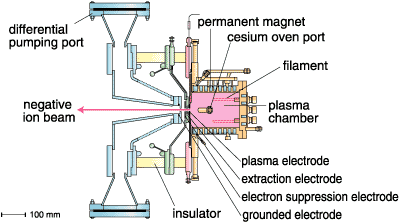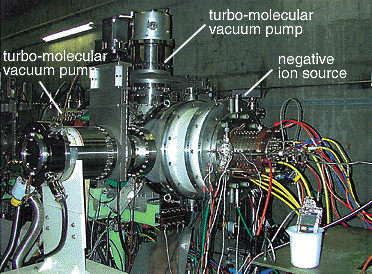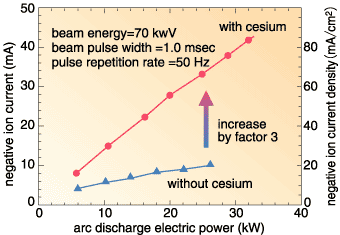The construction of a high intensity proton accelerator is about to start as a joint project of those independently planned by JAERI and KEK. The characteristics aimed at by the project are far above those presently existing, especially with its beam strength. The current intensity is obviously determined by that injected from the ion source. Furthermore, the current from the ion source must satisfy a stringent requirement that its quality is good enough to make the acceleration easier with the following accelerator.
The ion source should have a peak current of 60 mA, with a duty factor (ratio of the beam on time to the total) of 1.25 to 15 percent. In addition, the ions should be negatively charged in order to improve the capture efficiency of the beam injected into a synchrotron, which is one of the major components constituting the accelerator complex. There have been no negative ion sources that satisfy the above mentioned requirements.
We fabricated a negative ion source with various improvements based on those developed in the past, shown in Figs. 3-1 and 2, and detailed studies have been made on its characteristics. As a result, it became clear that, as shown in Fig. 3-3, the cesium seeding is effective and that an ion current and its density increase approximately proportionally with the increase in the arc discharge power, which produces negative ions in the plasma chamber. Furthermore, it was found that
the improvement of the vacuum in the ion extraction region, resulting from the differential pumping procedure, contributes significantly to suppress the beam loss due to the scattering with residual gas. Thus, a maximum beam current of 40 mA was achieved with a duty factor of 5 percent, which shows that the target specifications are now within reach. The current density, the current divided by the extraction aperture area, is 80 mA/cm2, proving a good quality with a small beam size. |


